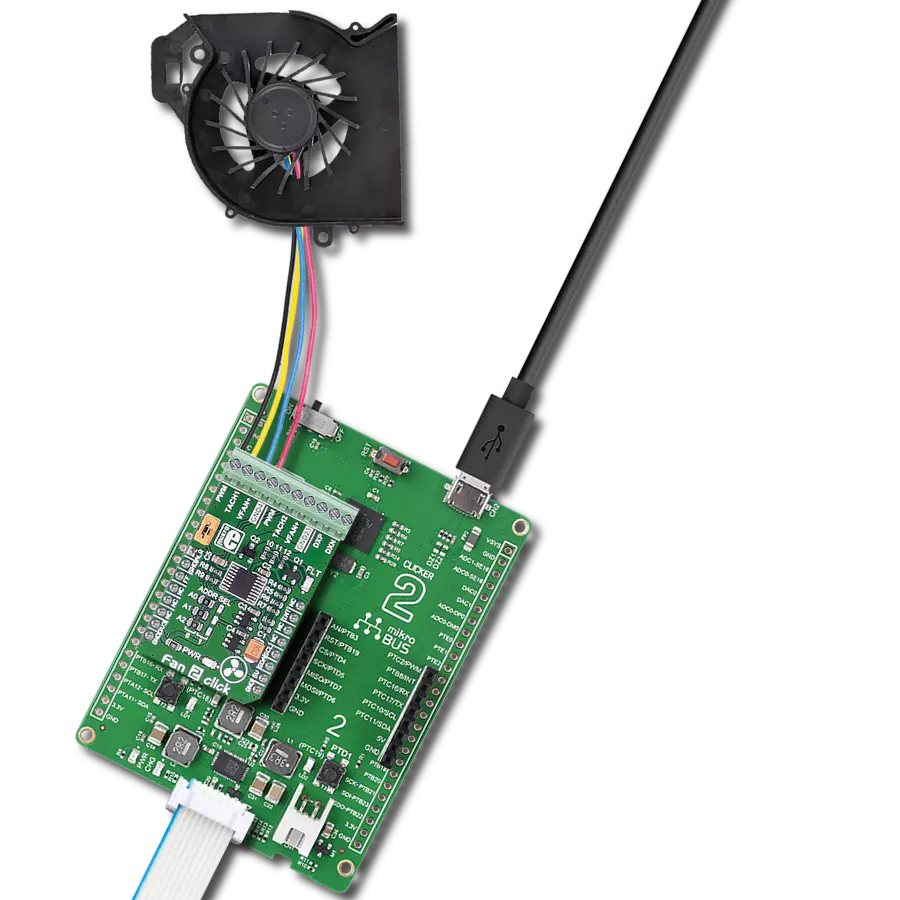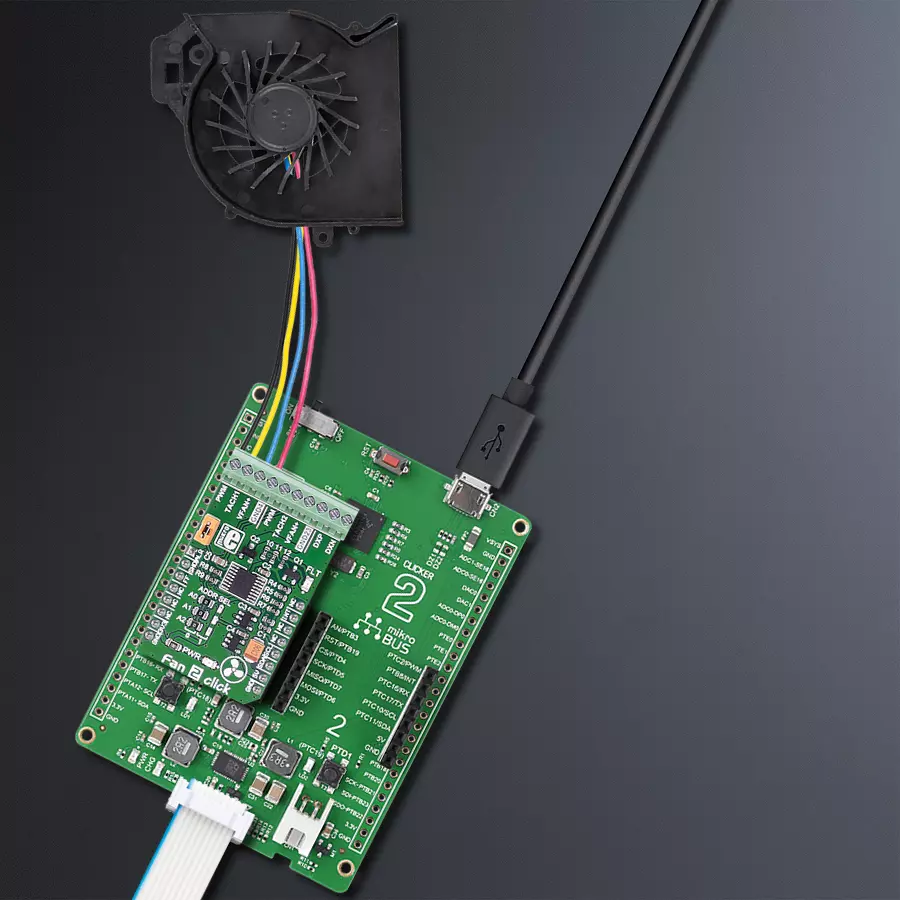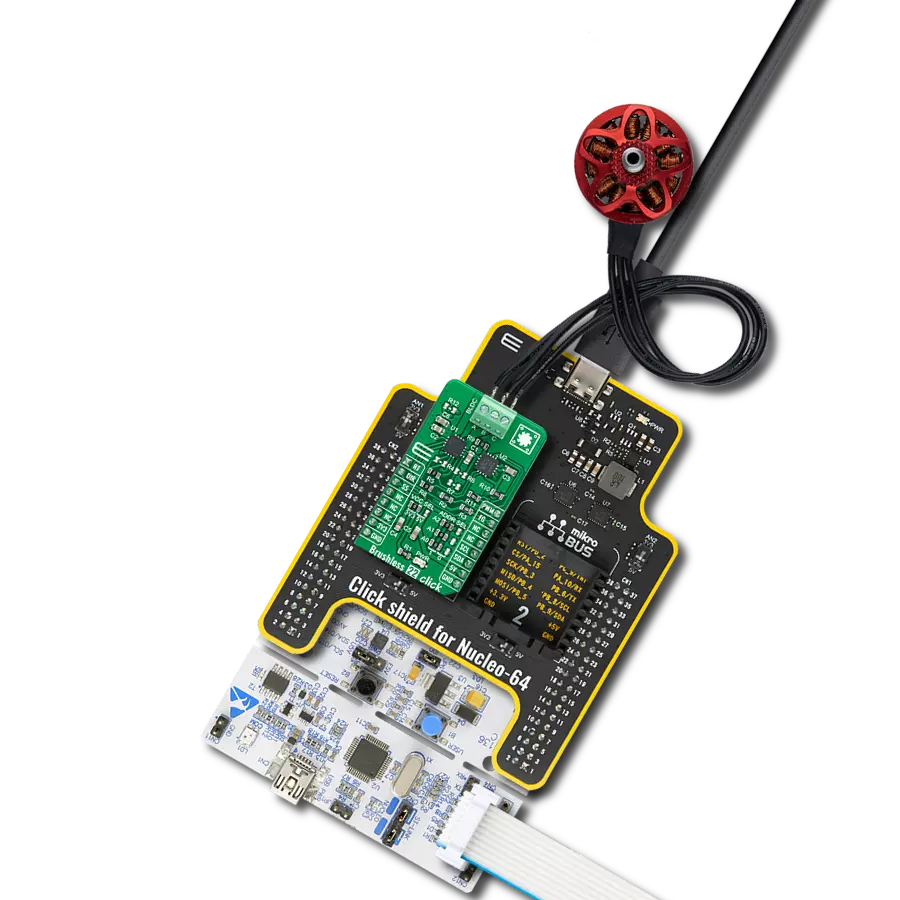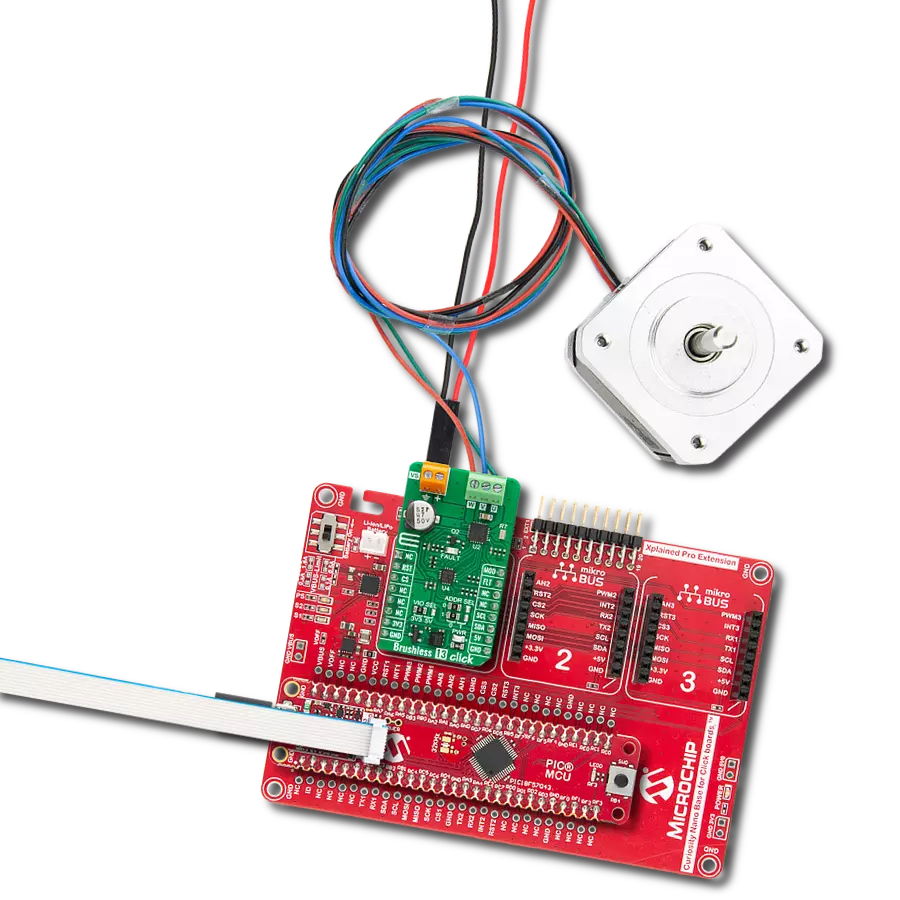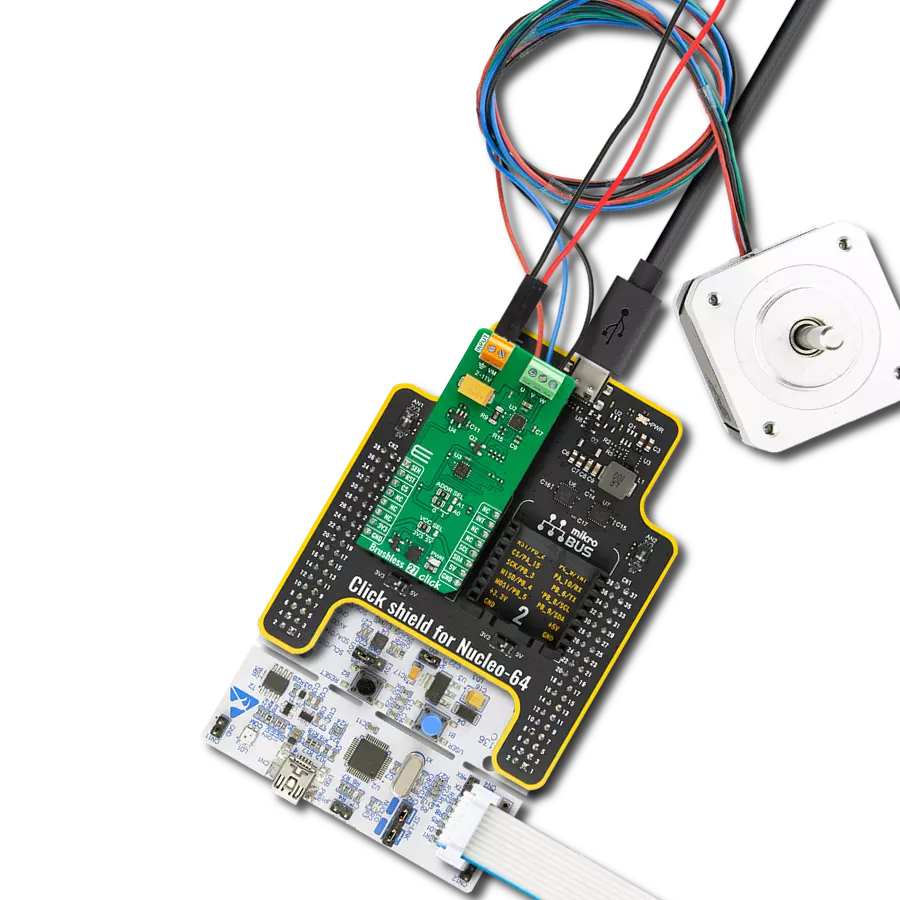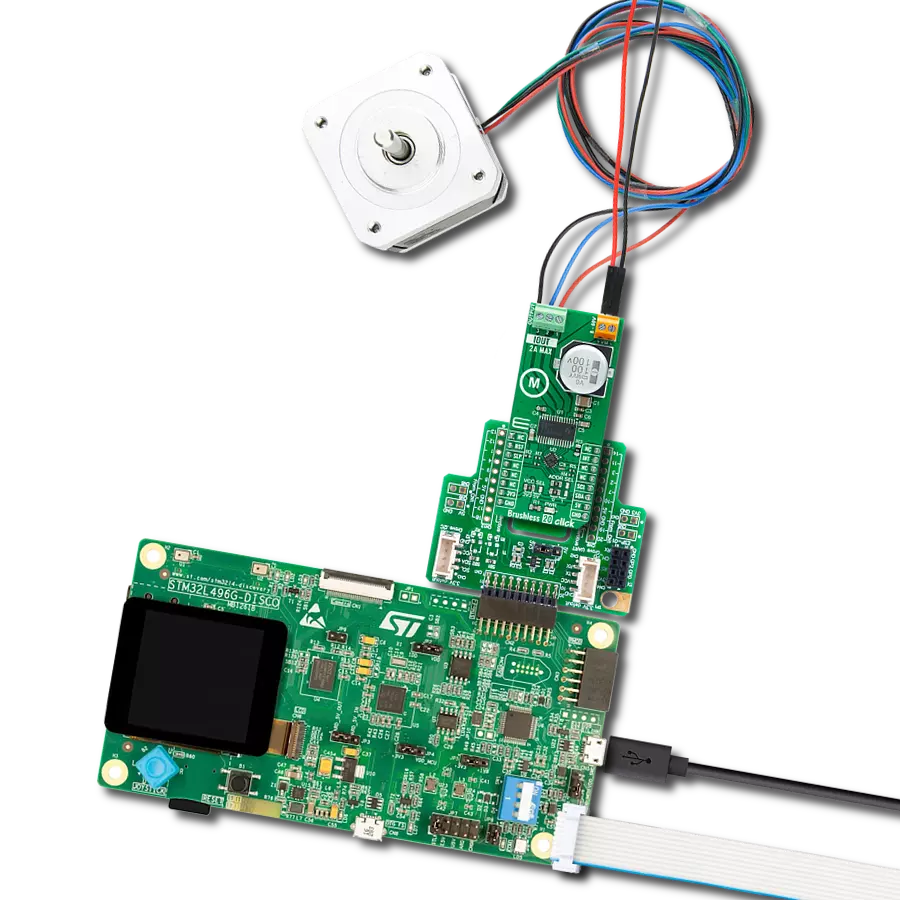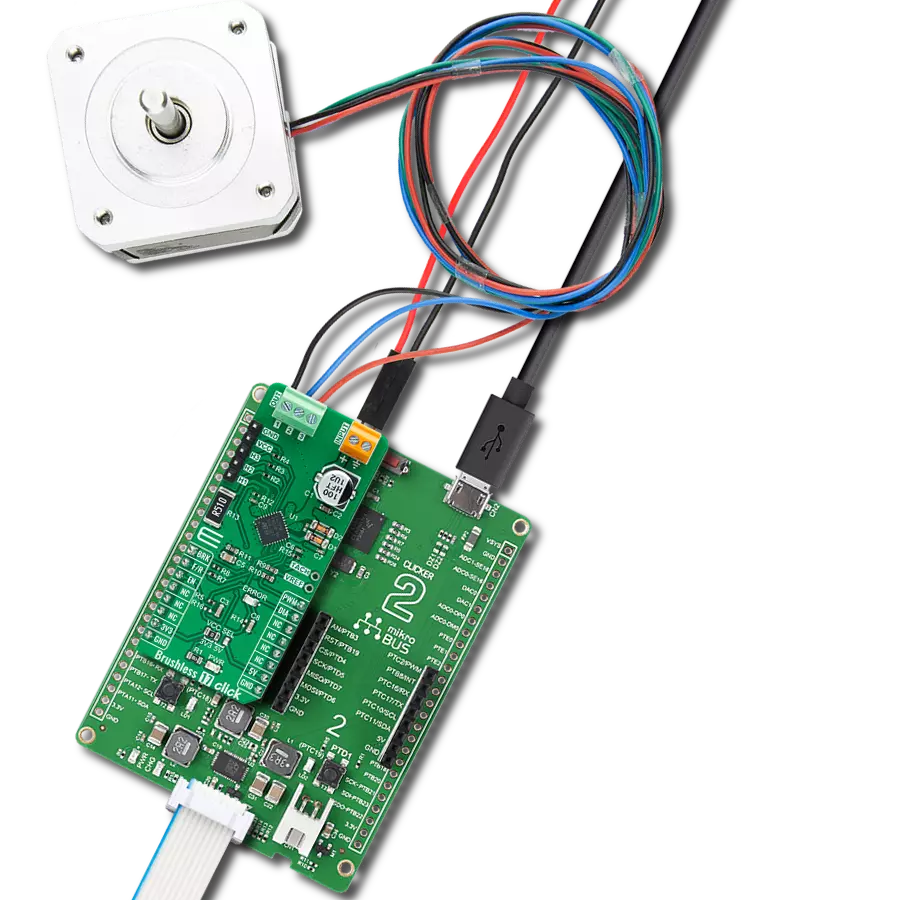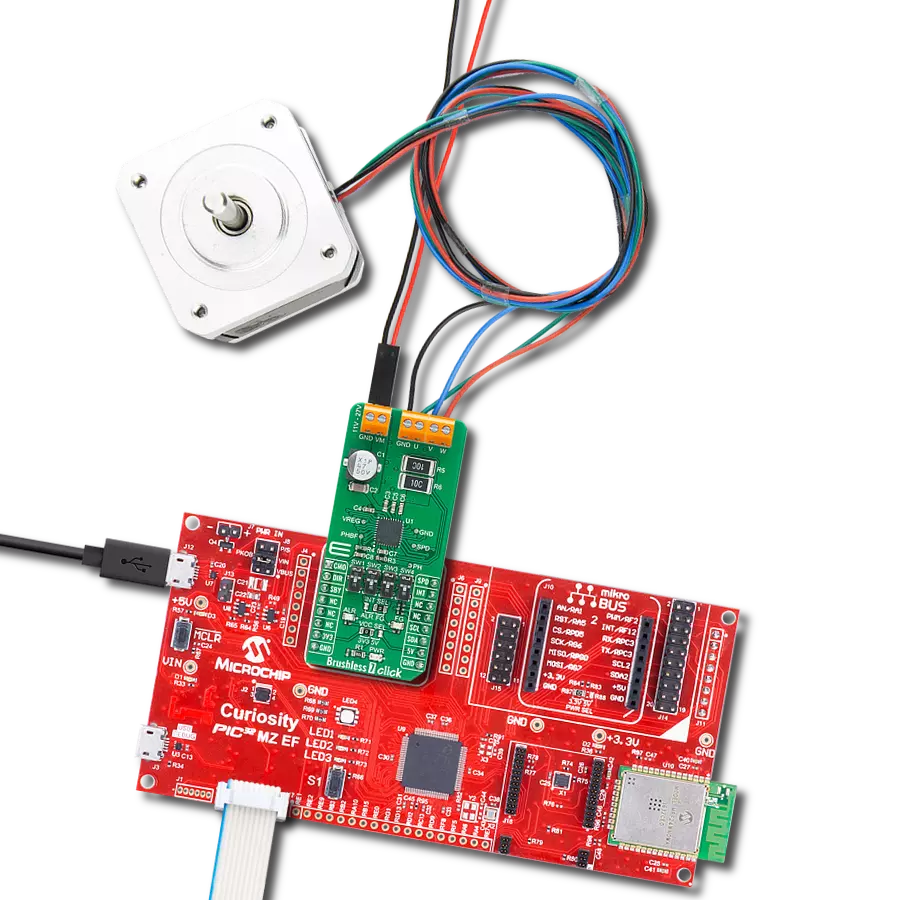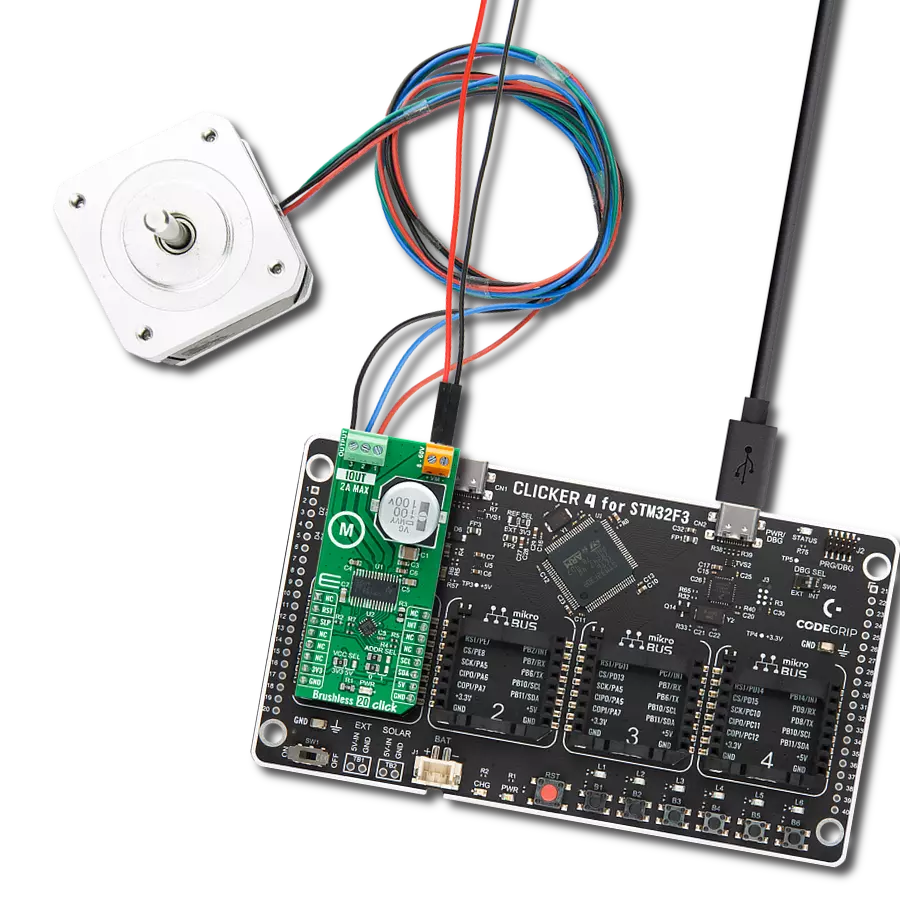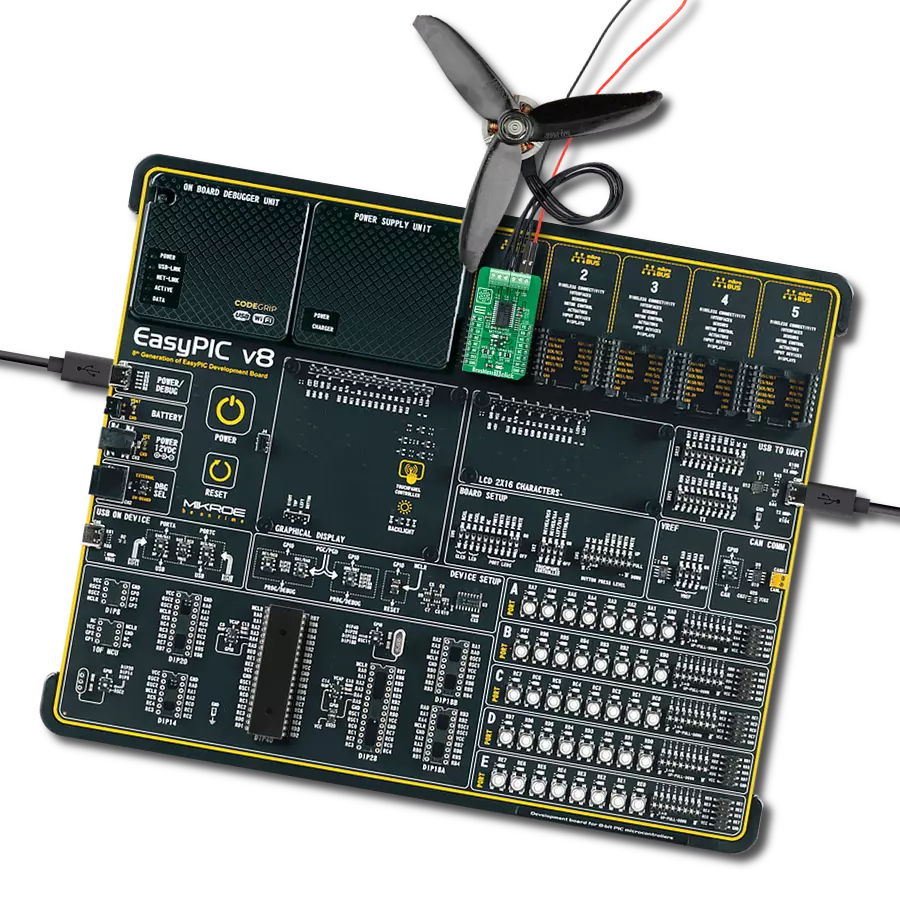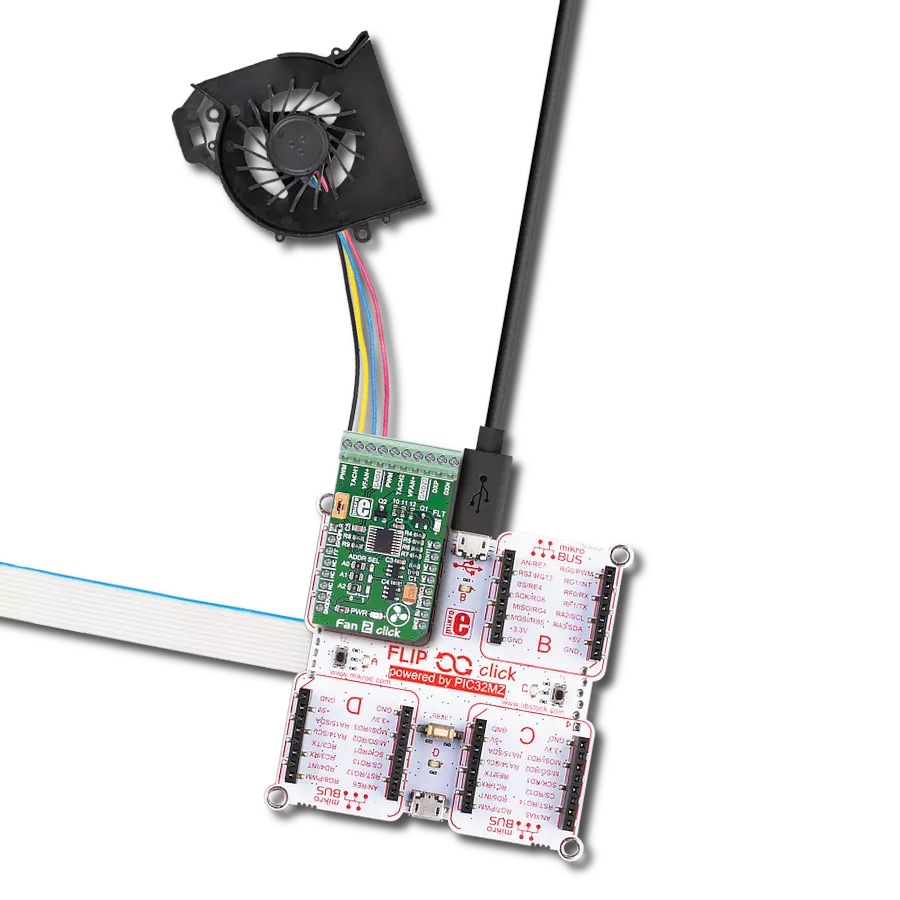Command your fans with precision and finesse
A
A
Hardware Overview
How does it work?
Fan 2 Click is based on the MAX31760, a precision fan-speed controller from Analog Devices. It can measure temperature and adjust the fan speed to keep the temperature at the same level. Fan 2 Click can also control two fans at the same time. This Click board™ is designed to run on either 3.3V or 5V power supply. It communicates with the target microcontroller over the I2C interface, with additional functionality provided by the following pins on the mikroBUS™ line: INT, AN, RST, and CS. For example, you can set the limit at 25°C, and if the temperature goes over that, the Click board™ will activate the fan; it will keep working until the temperature is 25°C again. The MAX31760 integrates temperature sensing along with
precision PWM fan control. It accurately measures its local die temperature and the remote temperature of a discrete diode-connected transistor, such as a 2N3906 or a thermal diode commonly found on CPUs, graphics processor units (GPUs), and other ASICs. Multiple temperature thresholds, such as local high/overtemperature (OT) and remote high/overtemperature, can be set by an I2C-compatible interface. Fan speed is controlled based on the temperature reading as an index to a 48-byte lookup table (LUT) containing user-programmed PWM values. The flexible LUT-based architecture enables users to program a smooth nonlinear fan speed vs. temperature transfer
function to minimize acoustic fan noise. Two tachometer inputs allow for measuring the speeds of two fans independently. The Click board™ carries a 10-pole terminal block that allows easy connection for pairs of two, three, or four-wire DC fans on the standard way of connection via PWM, TACH, GND, and VFAN lines. A single onboard jumper setting enables a two or 3-wire fan connection. In addition, there are two points (DXP, DXN) on the same terminal for external temperature sensor connection. The click communicates with the MCU over a data interface voltage level of 3.3V only.
Features overview
Development board
Clicker 2 for Kinetis is a compact starter development board that brings the flexibility of add-on Click boards™ to your favorite microcontroller, making it a perfect starter kit for implementing your ideas. It comes with an onboard 32-bit ARM Cortex-M4F microcontroller, the MK64FN1M0VDC12 from NXP Semiconductors, two mikroBUS™ sockets for Click board™ connectivity, a USB connector, LED indicators, buttons, a JTAG programmer connector, and two 26-pin headers for interfacing with external electronics. Its compact design with clear and easily recognizable silkscreen markings allows you to build gadgets with unique functionalities and
features quickly. Each part of the Clicker 2 for Kinetis development kit contains the components necessary for the most efficient operation of the same board. In addition to the possibility of choosing the Clicker 2 for Kinetis programming method, using a USB HID mikroBootloader or an external mikroProg connector for Kinetis programmer, the Clicker 2 board also includes a clean and regulated power supply module for the development kit. It provides two ways of board-powering; through the USB Micro-B cable, where onboard voltage regulators provide the appropriate voltage levels to each component on the board, or
using a Li-Polymer battery via an onboard battery connector. All communication methods that mikroBUS™ itself supports are on this board, including the well-established mikroBUS™ socket, reset button, and several user-configurable buttons and LED indicators. Clicker 2 for Kinetis is an integral part of the Mikroe ecosystem, allowing you to create a new application in minutes. Natively supported by Mikroe software tools, it covers many aspects of prototyping thanks to a considerable number of different Click boards™ (over a thousand boards), the number of which is growing every day.
Microcontroller Overview
MCU Card / MCU
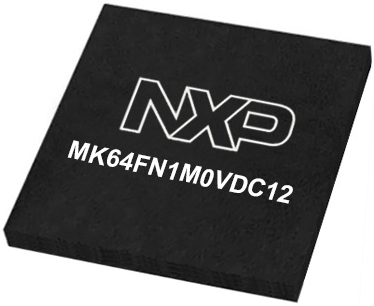
Architecture
ARM Cortex-M4
MCU Memory (KB)
1024
Silicon Vendor
NXP
Pin count
121
RAM (Bytes)
262144
Used MCU Pins
mikroBUS™ mapper
Take a closer look
Click board™ Schematic

Step by step
Project assembly
Software Support
Library Description
This library contains API for Fan 2 Click driver.
Key functions:
fan2_generic_write_byte- Generic Byte Write functionfan2_read_tacho- Tachometer Read functionfan2_direct_speed_control- Direct Fan Speed Control function
Open Source
Code example
The complete application code and a ready-to-use project are available through the NECTO Studio Package Manager for direct installation in the NECTO Studio. The application code can also be found on the MIKROE GitHub account.
/*!
* \file main.c
* \brief Fan 2 Click example
*
* # Description
* This example demonstrates the use of Fan 2 Click board.
* It demonstrates sensor measurements and fan control.
*
* The demo application is composed of two sections :
*
* ## Application Init
* Initializes I2C driver and executes a default configuration for Fan 2 Click.
* Also initializes UART logger for results logging.
*
* ## Application Task
* Increments the fan speed from half speed to maximum, and on each step measures
* the current fan speed in RPM and the remote temperature in Celsius.
* Fan speed will be incremented/decremented each second for 10 percents.
*
* \author Nemanja Medakovic
*
*/
// ------------------------------------------------------------------- INCLUDES
#include "board.h"
#include "log.h"
#include "fan2.h"
// ------------------------------------------------------------------ VARIABLES
static fan2_t fan2;
static log_t logger;
static float fan2_speed;
static uint16_t fan2_curr_speed;
static float fan2_temp;
static uint8_t flag;
static char deg_cels[ 3 ] = { 176, 'C', 0 };
// ------------------------------------------------------ APPLICATION FUNCTIONS
void application_init( void )
{
fan2_cfg_t fan2_cfg;
log_cfg_t log_cfg;
/**
* Logger initialization.
* Default baud rate: 115200
* Default log level: LOG_LEVEL_DEBUG
* @note If USB_UART_RX and USB_UART_TX
* are defined as HAL_PIN_NC, you will
* need to define them manually for log to work.
* See @b LOG_MAP_USB_UART macro definition for detailed explanation.
*/
LOG_MAP_USB_UART( log_cfg );
log_init( &logger, &log_cfg );
log_info( &logger, "---- Application Init ----" );
// Click initialization.
fan2_cfg_setup( &fan2_cfg );
FAN2_MAP_MIKROBUS( fan2_cfg, MIKROBUS_1 );
fan2_init( &fan2, &fan2_cfg );
fan2_default_cfg( &fan2 );
fan2_speed = FAN2_HALF_SPEED_PER;
Delay_ms ( 1000 );
log_printf( &logger, "* * * Fan 2 initialization done * * *\r\n" );
log_printf( &logger, "***************************************\r\n" );
flag = 0;
}
void application_task( void )
{
fan2_direct_speed_control( &fan2, fan2_speed );
Delay_ms ( 1000 );
fan2_read_tacho( &fan2, FAN2_REG_TACH1_CNT, &fan2_curr_speed );
fan2_read_temp( &fan2, FAN2_REG_REMOTE_TEMP_READ, &fan2_temp );
log_printf( &logger, "* Fan 2 set speed : %.2f %%\r\n", fan2_speed );
log_printf( &logger, "* Fan 2 current speed : %u RPM\r\n", fan2_curr_speed );
log_printf( &logger, "* Fan 2 remote temperature : %.2f %s\r\n", fan2_temp, deg_cels );
log_printf( &logger, "***************************************\r\n" );
if ( flag == 0 ) {
if ( fan2_speed < FAN2_MAX_SPEED_PER)
fan2_speed += 10;
else
flag = 1;
}
if ( flag == 1 ) {
if ( fan2_speed > FAN2_MIN_SPEED_PER)
fan2_speed -= 10;
else {
fan2_speed = FAN2_HALF_SPEED_PER;
flag = 0;
}
}
}
int main ( void )
{
/* Do not remove this line or clock might not be set correctly. */
#ifdef PREINIT_SUPPORTED
preinit();
#endif
application_init( );
for ( ; ; )
{
application_task( );
}
return 0;
}
// ------------------------------------------------------------------------ END
